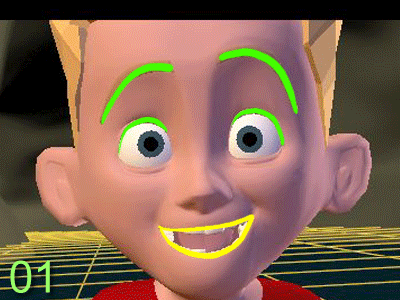Introduction
Animating a facial "take" (a surprised reaction) seems simple enough in concept, but once you get into it you'll find it requires as much understanding of animation principles as any other performance you might try to create. The human face is a complex system, but you don't want the animation to appear complex; all the parts should react in tandem and yet still feel like they are being controlled by multiple muscle groups. You also want to give the face a fleshy feel, which can be difficult if you don't have a good animation rig with the necessary controls. For this exercise I'm using as an example a shot of Dash that I animated for The Incredibles (above). This shot was a learning experience for me as well, and I was lucky to have director Brad Bird guiding me through it. It was a little daunting at first, but he helped me to understand how to approach the action, and now it all seems obvious to me. Hopefully this tutorial will do the same for you. On with the show!

Here is a software-rendered version of the shot with no eye mask and some additional markings to clarify what's happening in the brows, eyes and mouth. You can download a Quicktime movie of it by right clicking on this link. Note that when I refer to the "eyes" I mean the shape created by the upper and lower lids. I will also refer to the pupil, iris and sclera (or "whites") of the eyeballs. I've also tried to stabilize the camera and I've slowed down the playback so you can see each of the ten frames play back. Now I'm going to go frame-by-frame and explain what is happening in each one.